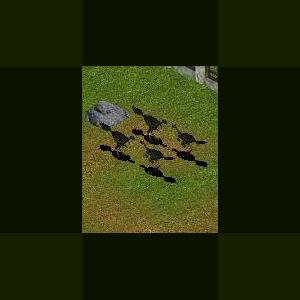About This File
Hagryphus
Hagryphus ("Ha's griffin", from Egyptian Ha, name of a god of the western desert and Greek gryphus meaning 'griffin' (a mythological bird-like creature); Zanno and Sampson, 2005) is an oviraptorosaurian theropod dinosaur from the Upper Cretaceous Period of what is now Utah.
To date, only a single species is known, H. giganteus. The holotype was discovered in the Kaiparowits Formation (Late Campanian) in the Grand Staircase-Escalante National Monument of southern Utah. Radiometric dating indicates that the beds where the specimen was found date to between 76 and 75 million years ago. Designated UMNH VP 12765, the type specimen resides in the collections of the Utah Museum of Natural History in Salt Lake City. It consists of an incomplete but articulated left manus and the distal portion of the left radius. Both the semilunate and radiale are preserved.
Other known species of North American oviraptorosaurs include Elmisaurus rarus, Microvenator celer, and Chirostenotes pergracilis. This group of dinosaurs is better known from the Cretaceous of Asia, where forms such as Khaan mckennai, Conchoraptor gracilis and Oviraptor philoceratops have been discovered.
Oviraptorosaurs are characterized by a shortened snout, massive endentulous jaws and extensively pneumatized skulls, often sporting elaborate crests, the function of which remains unknown. The toothless jaws may indicate a diet of eggs but these theropods likely fed on small vertebrates as well. Evidence suggests that they were feathered and some paleontologists consider them to be true birds (see the main article Oviraptorosauria for further information).
As the species name indicates, Hagryphus giganteus was a particularly large oviraptorosaur, estimated to have been approximately 3 meters (10 ft) long, which makes it one of the largest members of the clade Oviraptorosauria (Barsbold, 1976). H. giganteus is estimated to be 30-40% larger than the next largest known North American oviraptorosaur, Chirostenotes.



Recommended Comments
There are no comments to display.
Create an account or sign in to comment
You need to be a member in order to leave a comment
Create an account
Sign up for a new account in our community. It's easy!
Register a new accountSign in
Already have an account? Sign in here.
Sign In Now